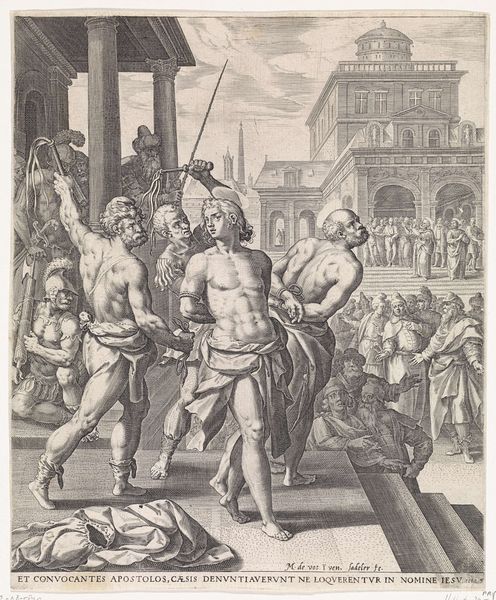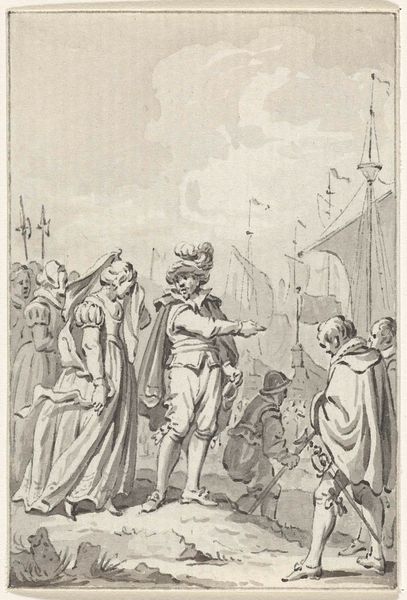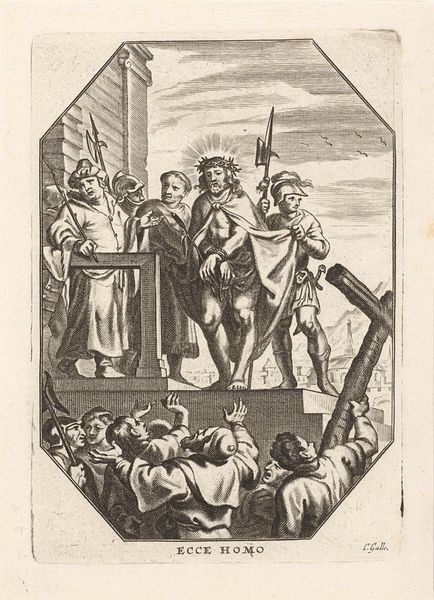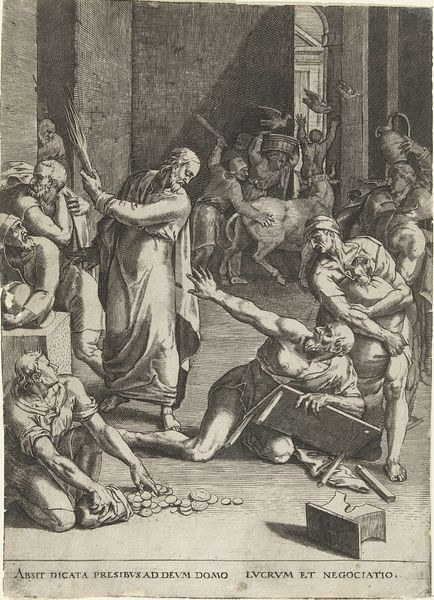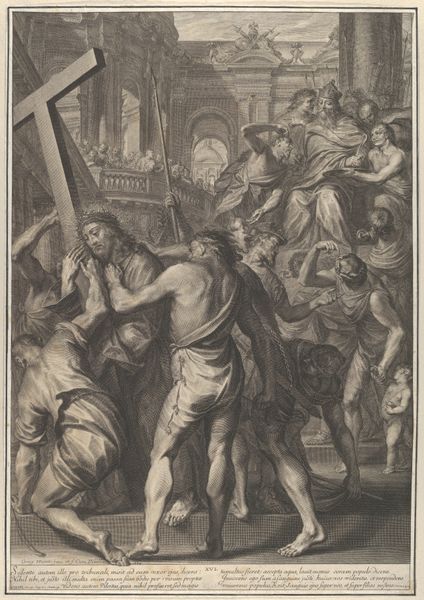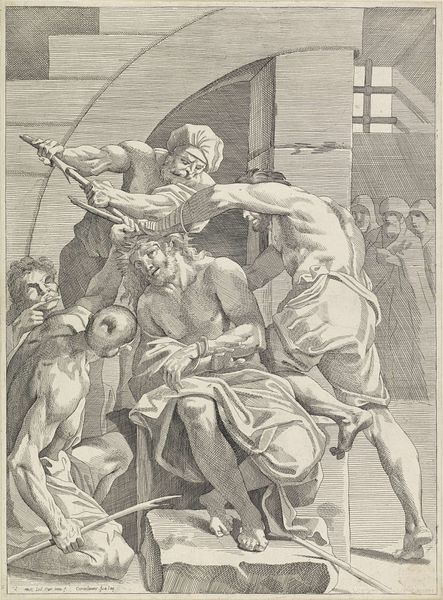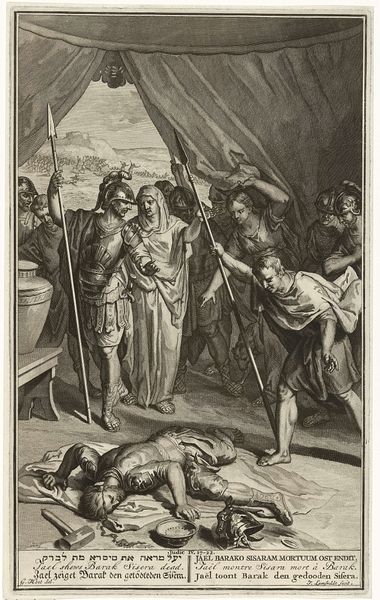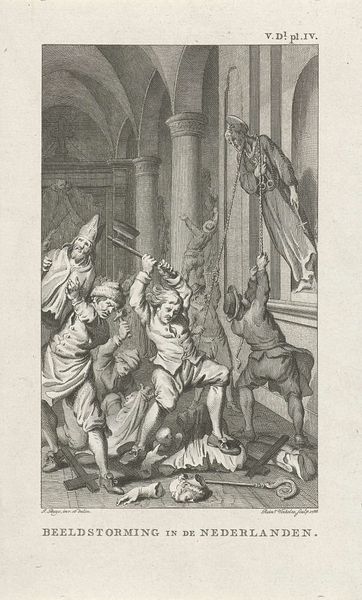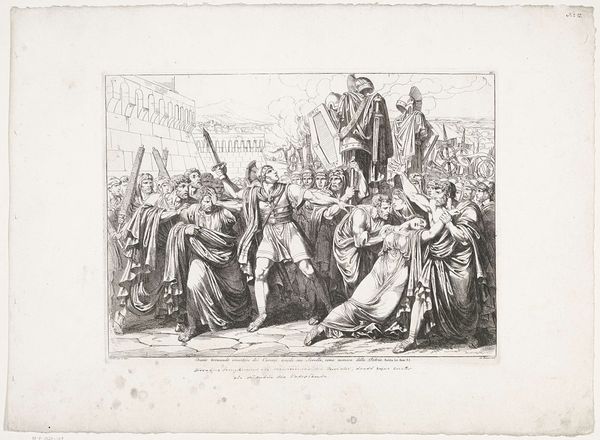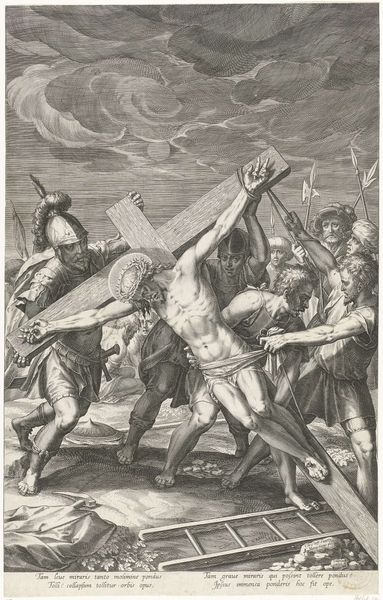
print, engraving
#
narrative-art
#
baroque
# print
#
old engraving style
#
figuration
#
history-painting
#
engraving
Dimensions: height 465 mm, width 333 mm
Copyright: Rijks Museum: Open Domain
Curator: Pieter de Jode II created this engraving, "Christus aan het volk getoond," sometime between 1628 and 1670. The scene depicts Christ presented to the people. It's quite dramatic, wouldn’t you agree? Editor: Absolutely, the mood is heavy, and the intricate lines give the scene a powerful depth. What strikes me most is the contrast between the polished stone and the rough texture of the crowd and Christ's vulnerability. What sort of socioeconomic issues were at play at the time? Curator: This piece clearly borrows from Baroque aesthetics with its emphasis on emotion and drama, using figuration and a narrative theme to focus on collective behaviour. It’s a fascinating moment within art history. Editor: It does speak to larger power imbalances; I wonder, though, about Jode's artistic choices. Look at how he meticulously crafted this scene. We must consider how engravings like these functioned: mass produced prints disseminated religious and political messaging at the time, didn't they? Who was the intended consumer? Curator: Indeed. "Ecce Homo"—'behold the man'— the Latin inscription points us toward a wider societal dialogue questioning authority during that period. Feminist theory even illuminates a deeper commentary, suggesting that Jesus is forced into display as he represents humanity through this period. Editor: It’s interesting that you mention this, because I find it intriguing to consider the labor embedded in the creation of the printing press. Where were the copperplates crafted, and who did the demanding task of creating those details to reproduce images? Such a process is both artisanal and yet produces something potentially revolutionary, and widely accessible to contemporary society. Curator: A powerful reflection, indeed. The layering of interpretation from societal roles to production truly underscores how complex a piece can be. Editor: It's clear there's much to explore when examining pieces such as this one: art isn't solely the domain of galleries and the elite, but interwoven into the everyday struggles.
Comments
No comments
Be the first to comment and join the conversation on the ultimate creative platform.
